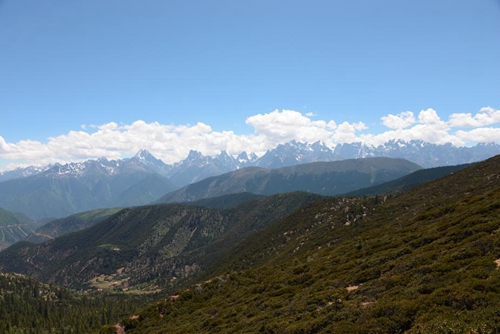Quercus sect. Heterobalanus, a section of sclerophyllous oaks in high elevation of East Asia, are mainly distributed in the Himalaya–Hengduan Mountains (HHM) and the mountain tops of East China. The high quality of the fossil record and present distribution in the HHM region and eastern China indicate that Quercus sect. Heterobalanus is an ideal model for inferring the evolutionary response to both the geological and environmental changes of the HHM as well as the other regions.
Prof. ZHOU Zhekun and his team of Xishuangbanna Tropical Botanical Garden (XTBG) conducted a study to see how the distribution patterns of oaks changed in response to the HHM uplift. They examined the effect of tectonic events in the HHM region on the oaks and aimed to provide a biological perspective on the geological history of the HHM region.
The researchers used molecular dating, ecological niche modeling (ENM), ancestral range reconstructions, as well as the relative geological events. They wanted to elucidate the role of the orogenic processes that created the HHM in shaping the geographic distribution of plants in the surrounding region. They further wanted to illuminate the geological history of the HHM from a biological perspective.
The researchers collected a total of 529 foliar samples of Quercus sect. Heterobalanus from 56 populations at elevations between 1034 m and 4236 m. They genotyped the 56 populations by using four cpDNA regions and nine nSSR loci to assess population structure and diversity, supplemented by molecular dating and ancestral area reconstructions.
Molecular dating revealed that the HHM exhibited uplift during the late Miocene to early Pliocene, providing novel insight into the spatiotemporal evolutionary history of the HHM from a biological perspective.
The HHM uplift created new habitats and climate regimes, favoring speciation in some taxa such as Quercus sect. Heterobalanus. The lowland region of the eastern HHM and the valleys of the plateau, continued to harbor older lineages while accommodating more recently diverged lineages from the nearby the HHM.
Environmental effects influenced the oaks' geographic distribution pattern, whereas the response of the oaks to the uplift, colonizing from the warm region to cold plateau, imprinted the geological evolution of the HHM.
Therefore, the evolutionary history of oaks may somewhat illuminate the geological uplift of the HHM.
The study entitled “Warm–Cold colonization: Response of oaks to uplift of the Himalaya–Hengduan Mountains” has been published online in Molecular Ecology.
Contact
ZHOU Zhekun, Ph.D Principal Investigator
Key Laboratory of Tropical Forest Ecology, Xishuangbanna Tropical Botanical Garden, Chinese Academy of Sciences, Mengla, Yunnan 666303, China
Tel: 86-871-65109223
E-mail: zhouzk@xtbg.ac.cn
The Himalaya–Hengduan Mountains
(Image by Meng Honghu)

